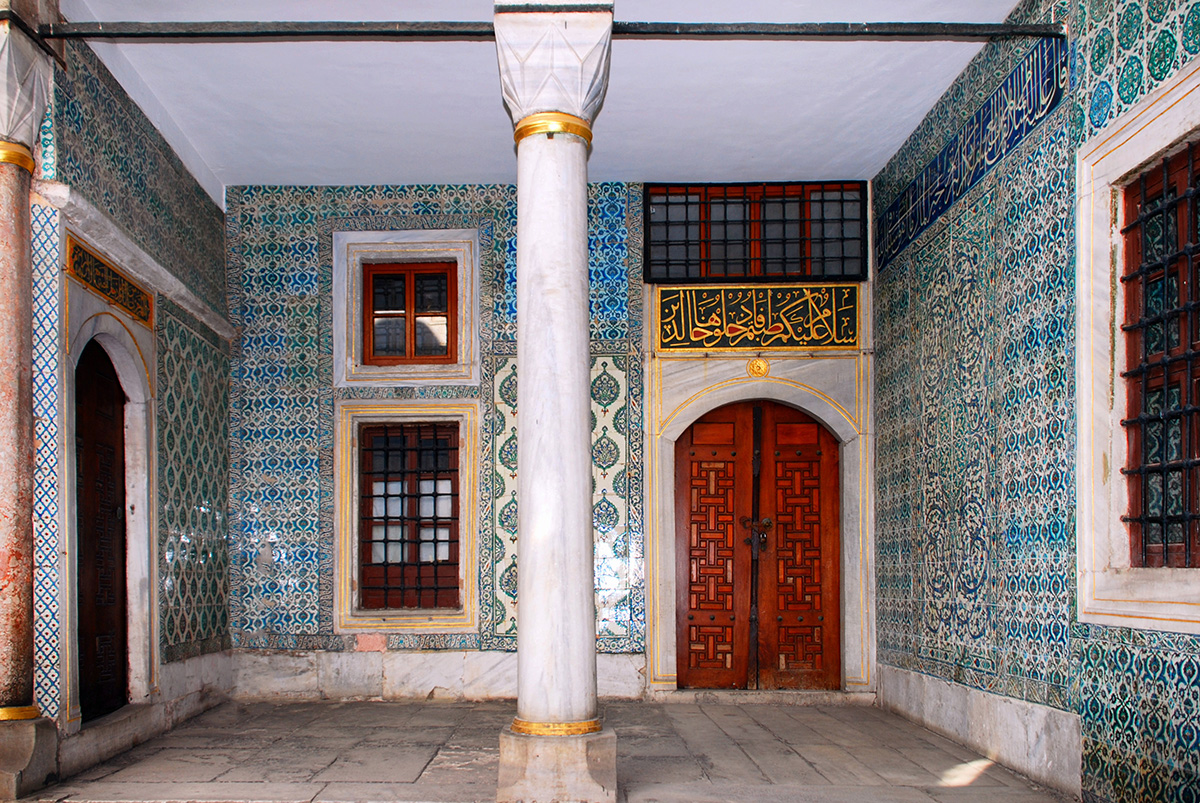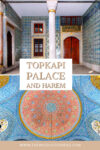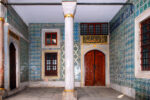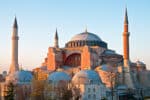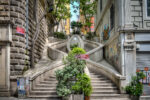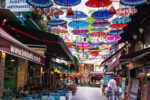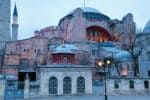The opulent Topkapi Palace of Istanbul is a sprawling complex of buildings that used to be home to thousands of residents and was considered a city within a city. The power seat of the Ottoman Empire from 1465 to 1830, one of the longest-standing empires in recorded history, it preserves the finest architecture and artifacts of its age.
Spending part of a day in Istanbul exploring the massive grounds of the palace, particularly the Topkapi Palace Harem, is your chance to get a glimpse into the lifestyle of Ottoman sultans. And to make the experience more immersive, this post will reveal some of the stories behind the opulent facade of the harem.
But first, some practical details for visiting Topkapi Palace and the Harem.
How to visit Topkapi Palace and Harem
Topkapi Palace is located in the Sultanahmet neighbourhood, on the Seraglio Point overlooking the Marmara Sea and the Bosphorus.
It is open from 9 am to 6 pm. Check the opening times prior to your visit, as the palace may be closed on Tuesdays. The entry fee for Topkapi Palace, Harem, and Hagia Irene is 285 Turkish Lira.
You can purchase tickets at the Palace, but if you prefer to skip the queue and explore the site in the company of a knowledgeable local guide, consider these two tours:
Topkapi Palace and the Harem with a Historian – a great way to learn the history and the gossip about the lives of the palace’s Ottoman inhabitants in a 1.5-hour tour.
Small-Group Full-Day Tour of Sultanahmet Sites – A time-efficient way to combine the tour of Topkapi Palace with a visit to Hagia Sophia, Basilica Cistern, Grand Bazaar, and a three-course lunch.
Where to stay near Topkapi Palace
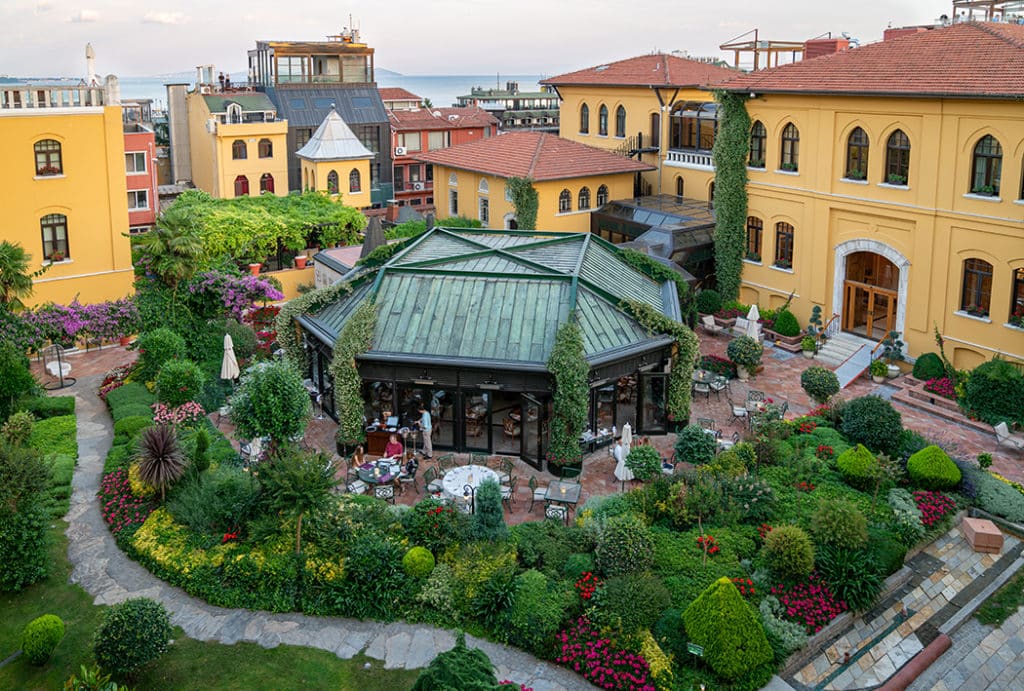
Whether you are a history buff or not, staying in the historic imperial centre of Istanbul is like travelling to a different era.
If you are looking to wrap yourself in Sultan-worthy luxury, consider the gorgeous White House Hotel. The exquisite white and gold decor will make you feel like you are staying in the Topkapi Palace yourself.
Another elegant choice is the Magnaura Palace Hotel. Located right in the heart of Sultanahmet, 450 meters from Topkapi Palace, it has a terrace with stunning views of the Blue Mosque.
The nearby Celine Hotel – Ottoman Mansion is full of classical charm with its beautiful atrium with a traditional Ottoman fireplace in the lounge area.
For a more budget-friendly option, consider Hotel Nena, which tastefully combines Turkish and Byzantine architecture and offers views over the Bosphorus from the rooftop restaurant.
Topkapi Palace layout
Given the size of the place, exploring it can be a little intimidating. What are the ‘must-sees’ of this sprawling complex of art and history? Well, if you only see one thing at Topkapi Palace, make sure it is the harem. But if you have a couple of hours to spare, here are some tips on exploring the palace.
Thankfully, the layout of the palace is well-organized into four courtyards with gated passages between them.
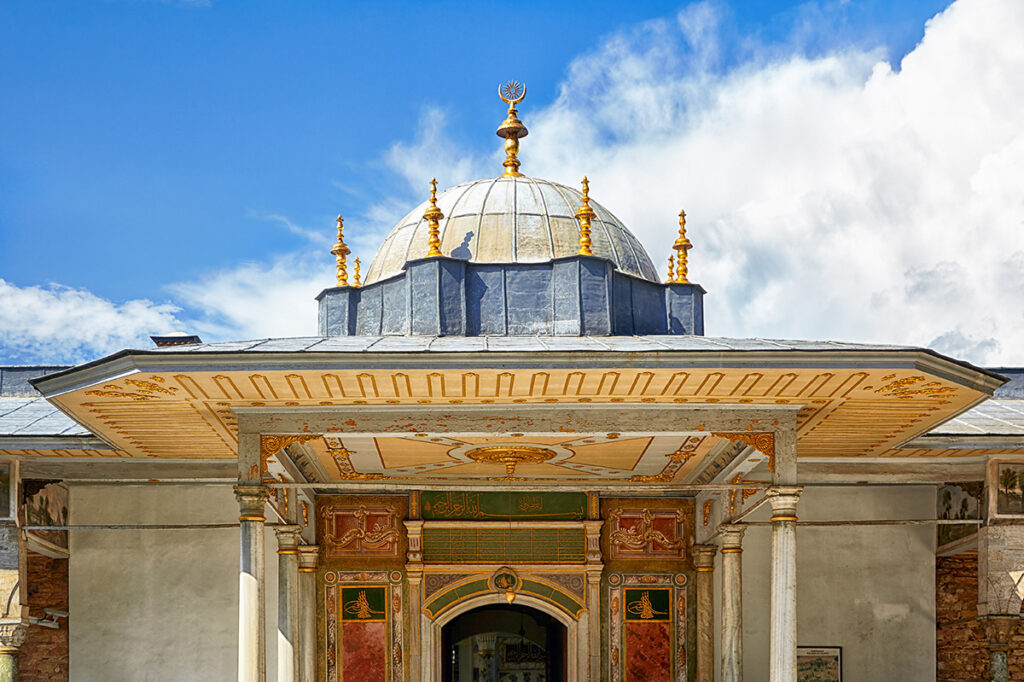
The entrance to the palace through the Imperial gate takes you to the First Courtyard, also known as the Court of the Janissaries or Parade Court. Here you find Haghia Irene (a Byzantine church that was never converted to a mosque by the Ottomans), Istanbul Archaeological Museum and expansive gardens.
The Second Courtyard is dominated by the Imperial Council Hall (Divan), the palace kitchens, and the imperial stables. The Topkapi Palace Harem, an absolute must-see at the palace, joins the Second and the Third Courtyards.
The Third Courtyard is the most private part of the palace, home to the Sultan’s Audience Chamber and the Pavilion of the Holy Mantle (Chamber of Holy Relics). The artifacts in this pavilion are definitely worth a visit – they are some of the most ancient religious artifacts that existed in the world during the reign of the Ottomans.
The Fourth Courtyard is a collection of terraces and gardens leading toward the viewpoint over the Golden Horn and the Wall of Constantinople. There are several stunning pavilions in this courtyard that you should explore.
Topkapi Palace Harem
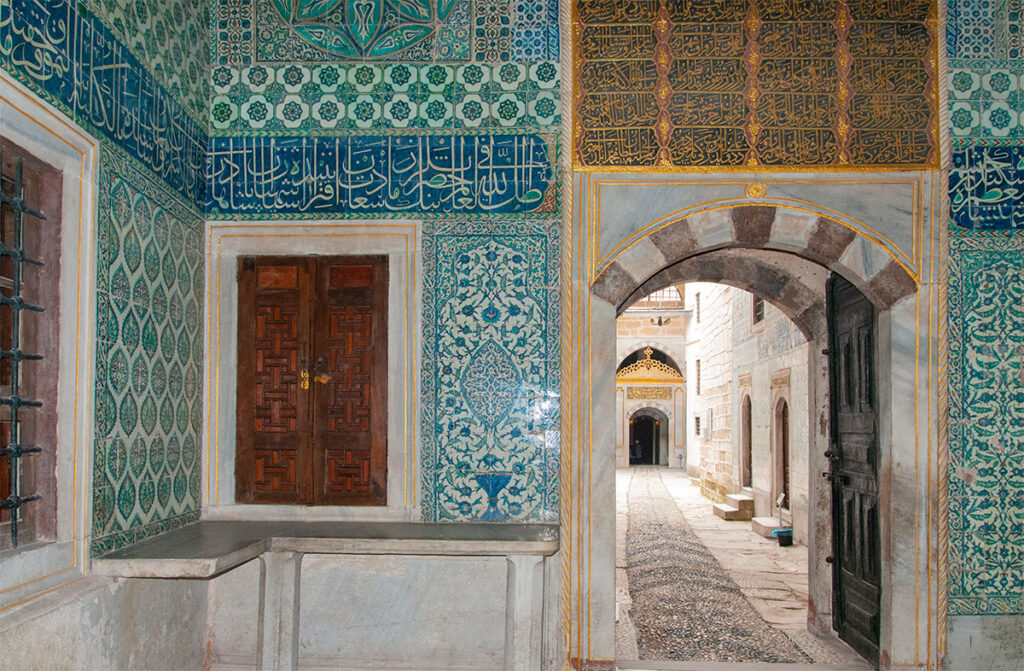
The most opulent part of the palace is undoubtedly the Harem, with the entrance beneath the Tower of Justice on the western side of the Second Courtyard. Spread over six floors, Topkapi Palace Harem is a labyrinth world of lavishly decorated marble hallways, arched doorways, and more than 300 rooms exquisitely decorated with ornate tiles.
And even though only part of one floor is open to the public, that part is enough to convey the striking beauty of this pleasure den of the sultans.
You can easily spend hours exploring all the nooks and crannies of the palace, but if you are short on time, visit the Harem for a couple of hours and appreciate the rest of the palace as you walk through it on the way.
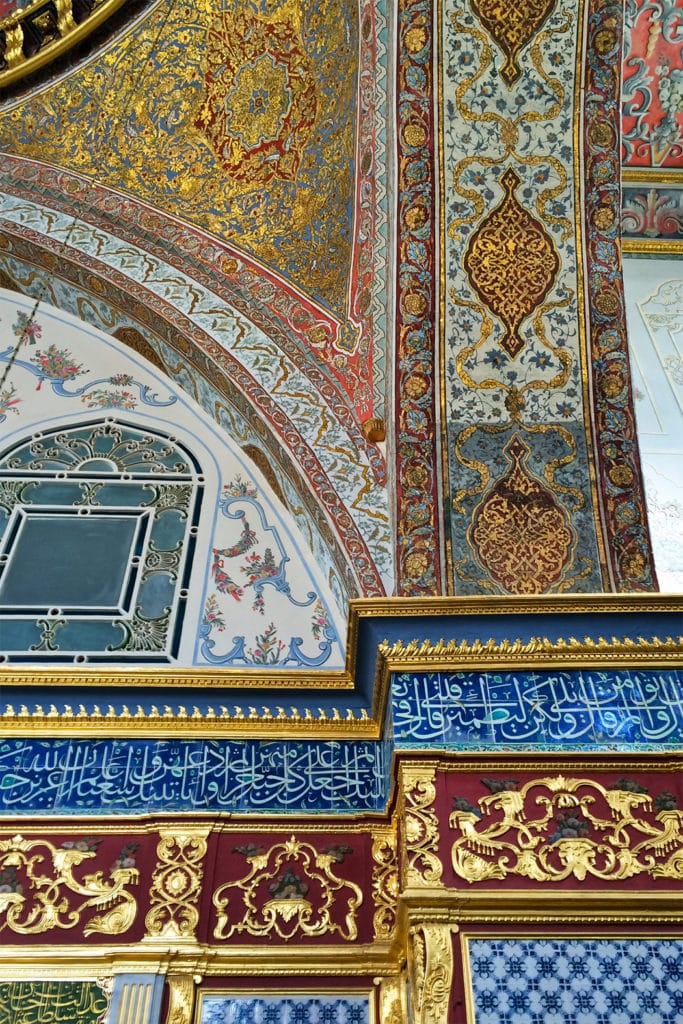
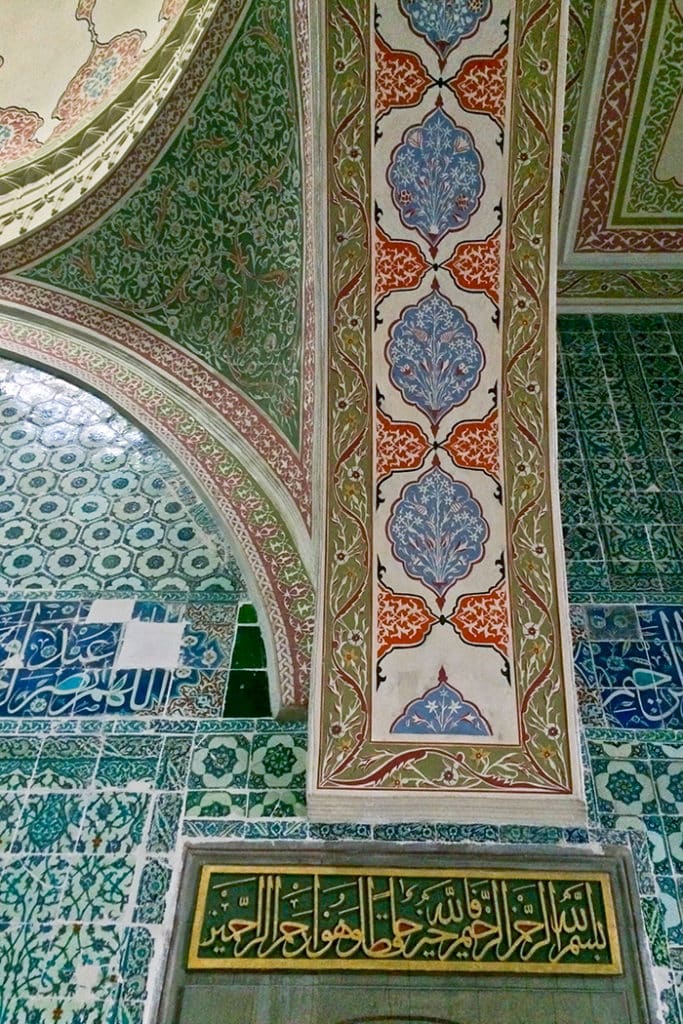
The layout of the Harem consists of clusters of buildings connected by hallways and courtyards. Each service team had their own area clustered around a courtyard.
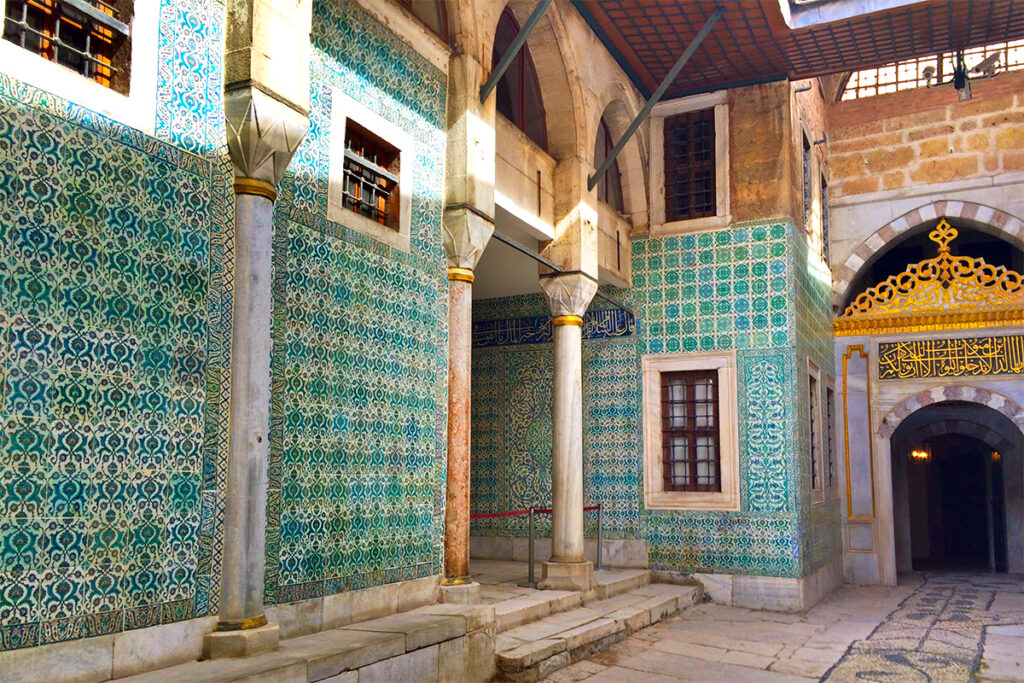
As you enter the Harem through the Carriage Gate, you pass the Dormitory of the Corps of the Palace Guards and the Harem treasury.
Next is of the most beautiful passages in the Harem – the Courtyard of the Black Eunuchs, artfully decorated with Kütahya tiles. The doors behind the columns lead to the eunuchs’ dormitories, where up to 200 eunuchs lived, serving the women of the Harem.
At the end of this stunning courtyard is a rather plain Courtyard of the Concubines and Sultan’s Consorts, surrounded by baths, a laundry fountain, a laundry, dormitories and private apartments.
Concubines and Eunuchs
You may think that the Harem was a place of exotic debauchery for the sultan; after all, some Sultans were known to have as many as 300 concubines. But in reality, the harem was the imperial family quarters where people’s lives were governed by tradition and protocol, with a fair amount of scheming and political intrigue.
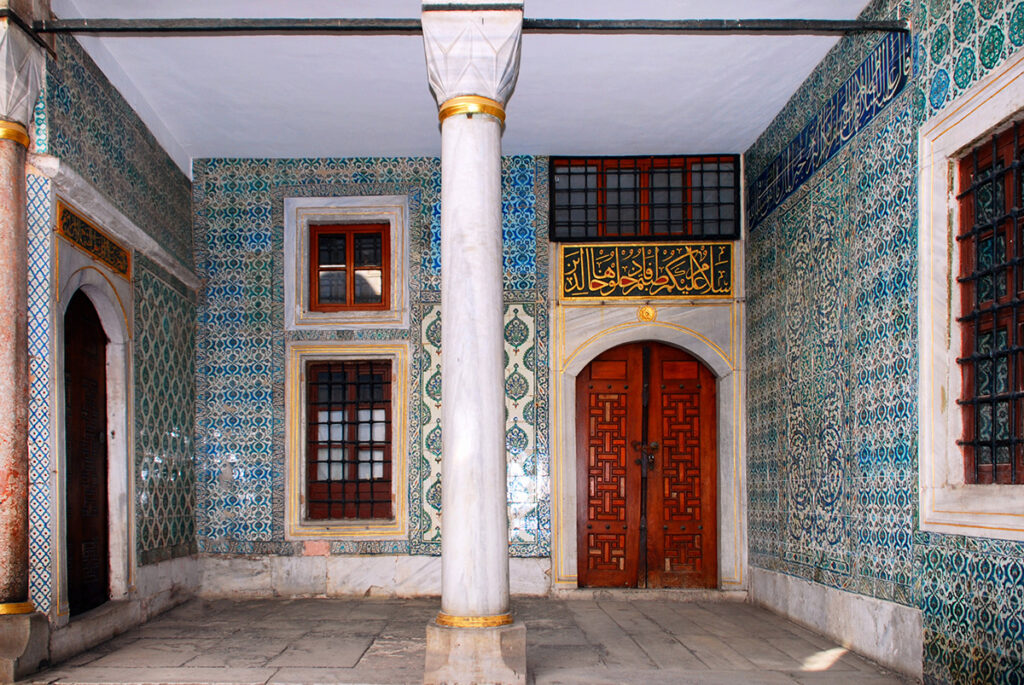
The bitterest rivalry usually occurred between the mothers of the Sultan’s children because only of would eventually become the mother of the Sultan. And with some sultans fathering more than 100 children, the competition was very fierce.
The concubines were all foreign women, Jewish or Christians, mostly coming from the lands conquered by the expanding Ottoman Empire. Many of them never made it to Sultan’s bedroom.
The only men allowed into the Harem, apart from the Sultan himself, were the eunuchs, mostly the prisoners of war themselves, who were castrated before puberty and spent their lives in service at the Harem.
Sultan’s Family
While most of the concubines lived together in large dormitories, members of Sultan’s family and his favourite concubines had the most lavish and spacious lodgings, often with an adjacent courtyard.
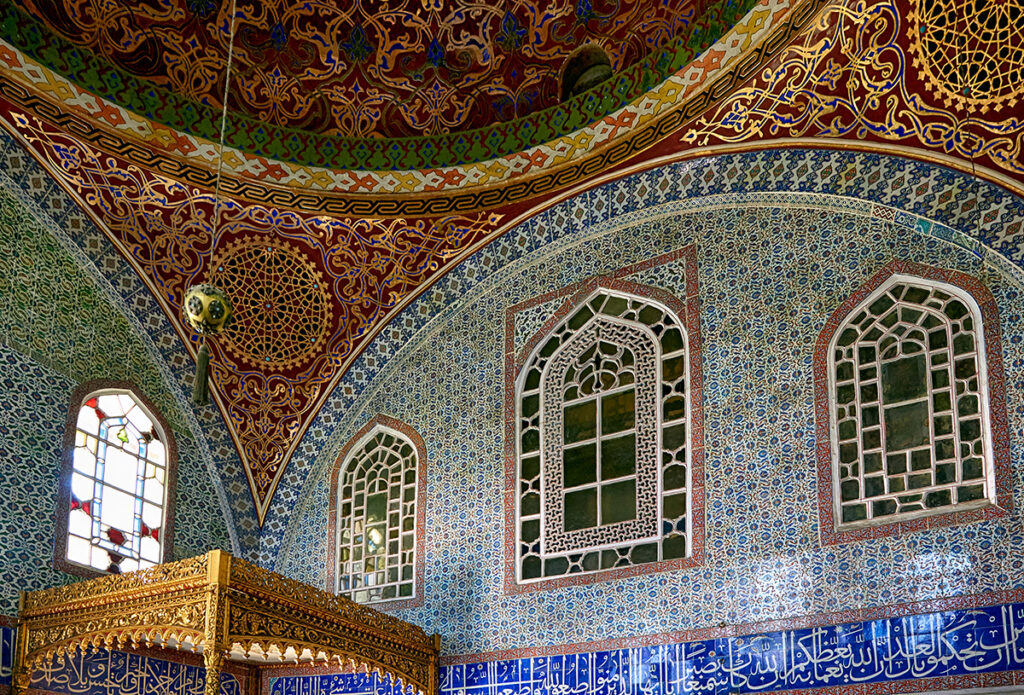
The first imperial quarters you come to are the Appartments of Validae Sultan – the sultan’s mother. These apartments, together with the apartments of the Sultan, formed the largest and most important section of the Harem, consisting of 40 separate rooms.
Only two rooms of the Valide Sultan apartments are open to the public. The Salon of Valide Sultan is the most striking of the two. Unlike most of the rooms in the Harem that are decorated with exquisite tiles, the salon features murals with charming views of 19th-century Istanbul.
Valide Sultan ruled the life of the harem and often in the entire empire through a weak and pliable Sultan. Sultan Ahmet III was quoted as saying, “The world lies at the foot of the mother.”
It was the highest position attainable for a concubine, which meant that the girls in the harem schemed and competed for the ‘honour’ of spending nights in the Sultan’s bed in hopes of producing an heir and rising through the ranks to become Valide Sultan.
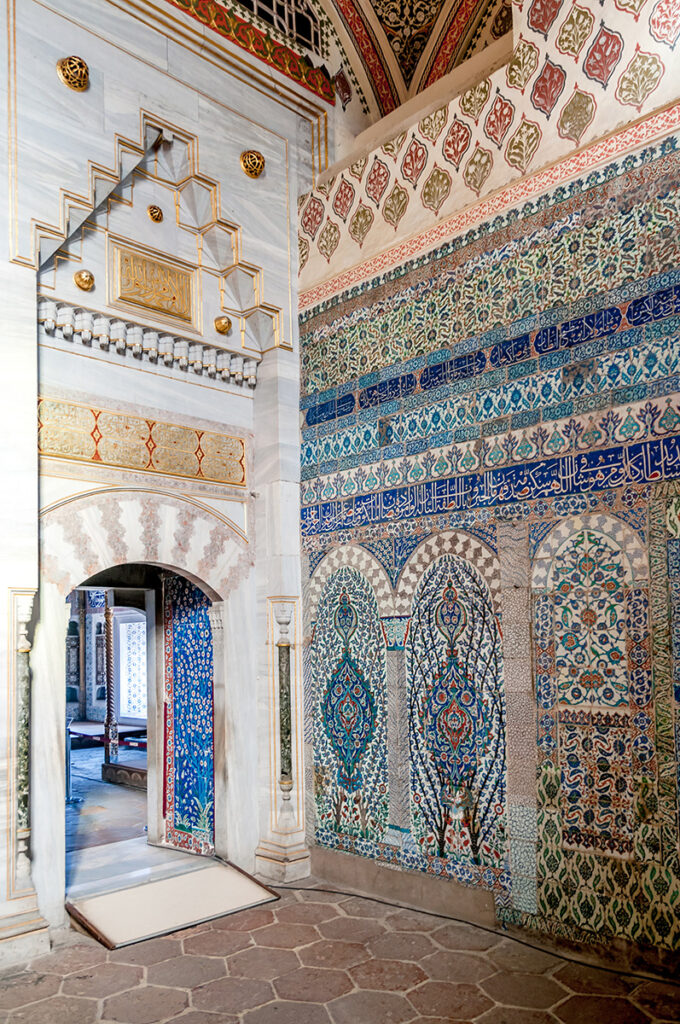
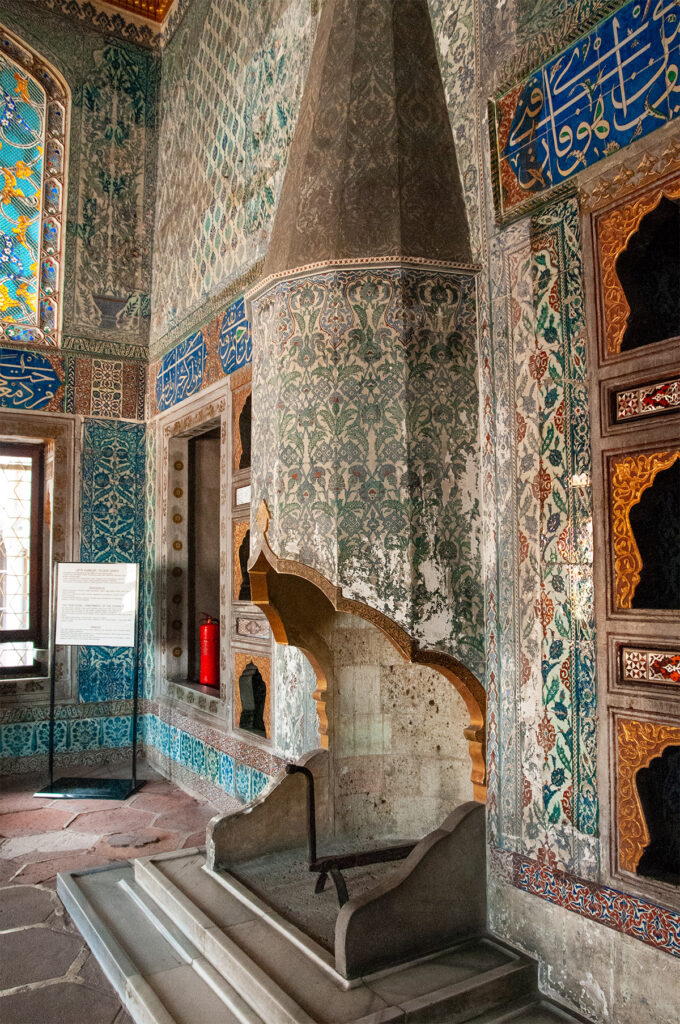
As you wander through the Topkapi Harem, its legends come to life. Great schemes and intrigues were planned and executed in these halls by Roxelana or Hürem Sultan, a concubine who became the powerful consort of Sultan Süleyman the Magnificent. And great tragedies occurred within these walls when İbrahim the Mad had all his 280 concubines thrown into the Bosporus when he got tired of them.
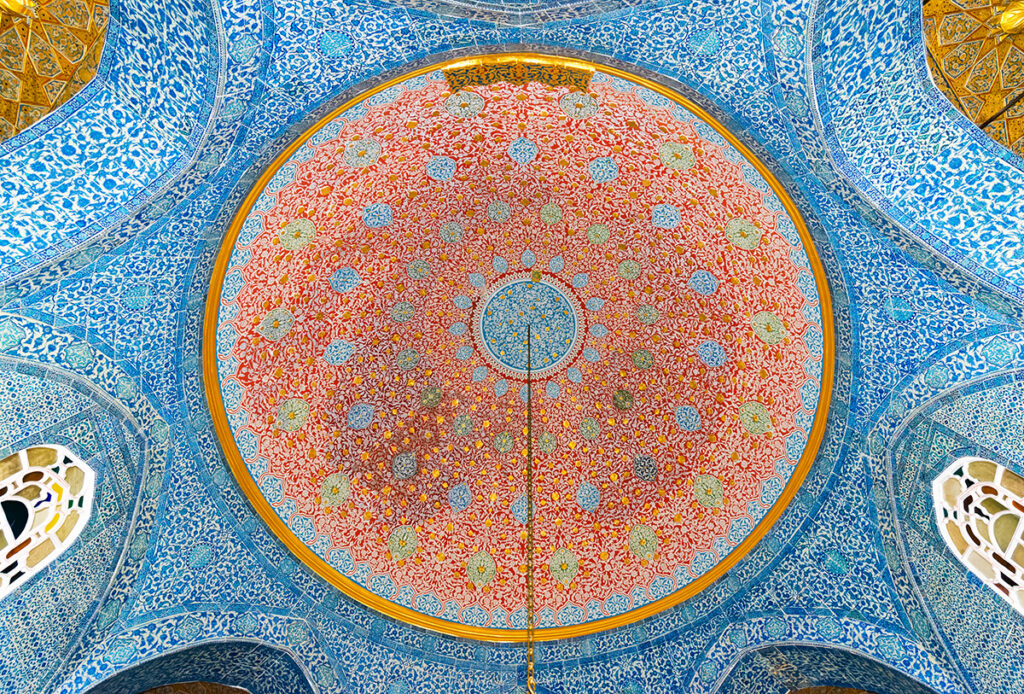
Next to the apartments of Valide Sultan is Murat III Privy Chamber – the oldest and the finest surviving room in the Harem, dating back to the original construction between 1578 and 1590.
Imperial Hall
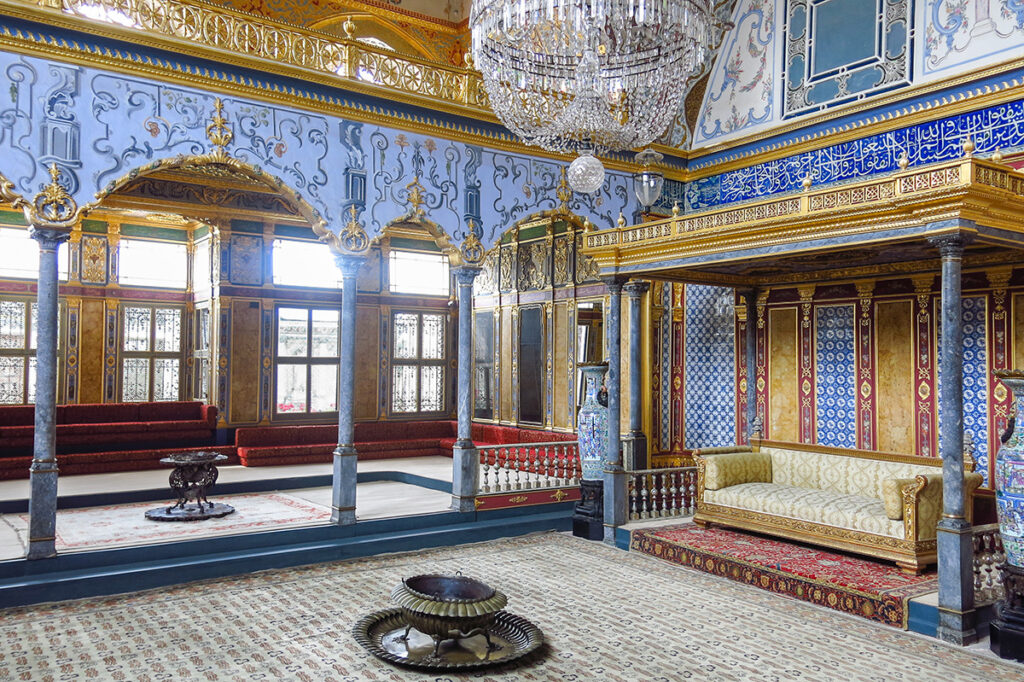
The true gem of the Topkapi harem is the Imperial Hall. It is the largest and the most luxurious room in the palace. It served as the reception hall for the Sultan as well as for the entertainment of the harem. The Sultan’s throne is distinctly Ottoman in style, resembling a lavish couch more than a traditional European chair-style throne.
Next to the throne is the “band room”, where the musicians would play their instruments from the low ottoman couches providing a musical accompaniment to the seductive dance of the concubines.
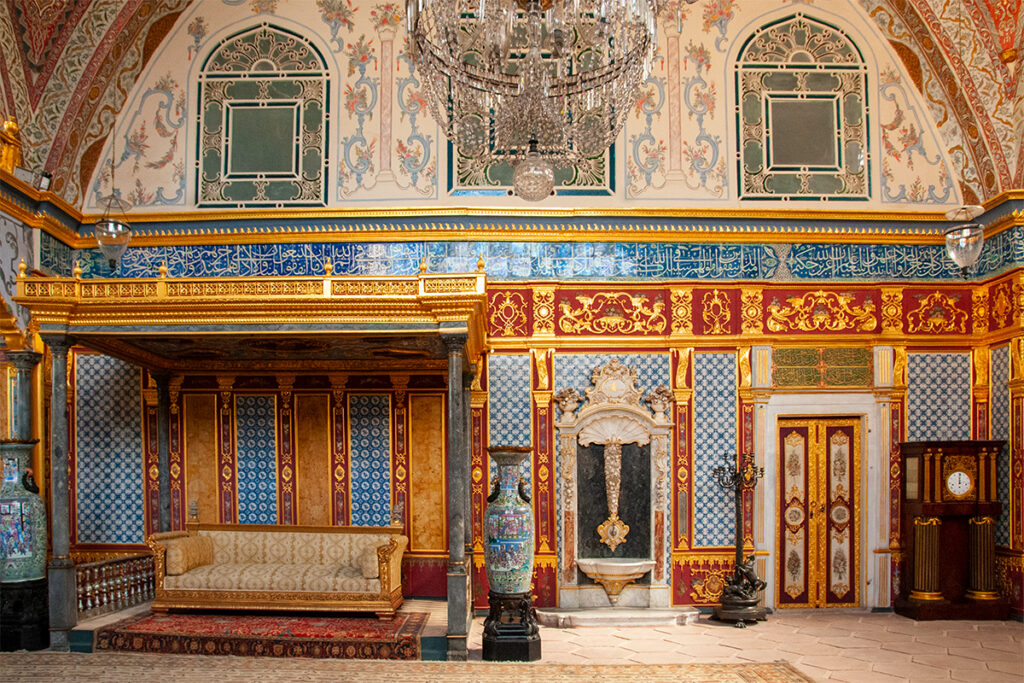
Every piece of furniture, paint and tile in the room ooze exuberant luxury, celebrating the indulgence and decadence of the Sultan’s lifestyle.
Apartments of the Crown Prince
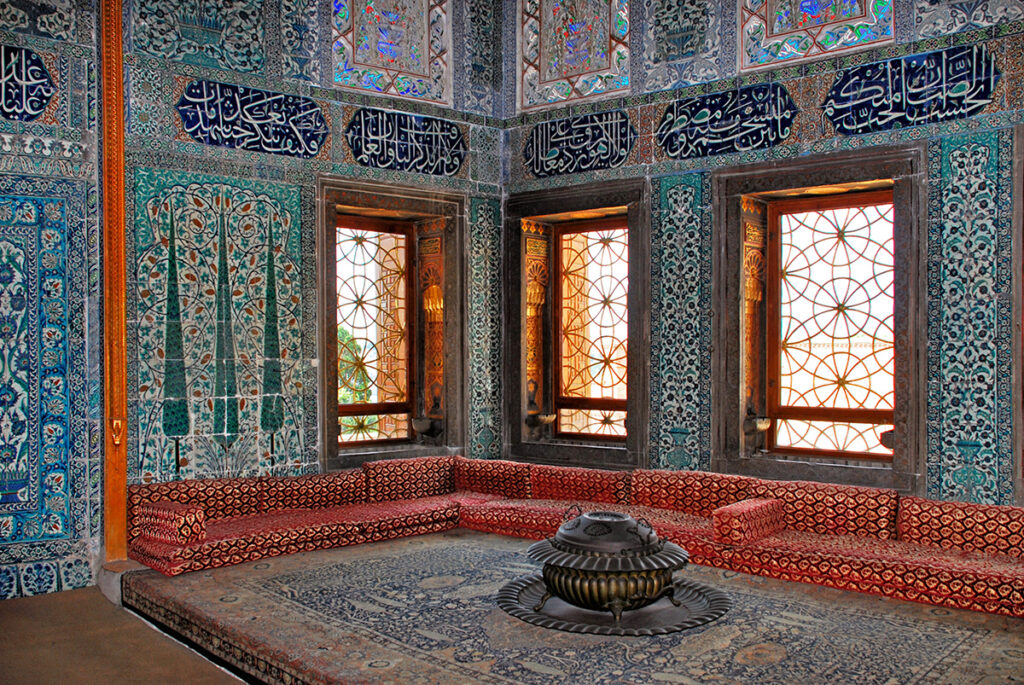
Next to the Imperial Hall are the Apartments of the Crown Princes. This is where the sultan’s brothers and half-brothers, who represented a threat to the throne, were imprisoned for their entire lives.
Considered by many to be the most beautiful rooms in the Topkapi harem, they were actually called a “Golden Cage”. The princes enjoyed a life of obscene luxury, received the finest education and had hundreds of concubines to keep them company, but they could never leave the harem and were under constant surveillance by the palace guards.
This imprisonment, however, is a considerable step up in the fates of possible successors to the throne. Earlier sultans practised fratricide, killing all their brothers as soon as they ascended the throne. Mehmed III infamously murdered 19 of his brothers, some of whom were still infants.
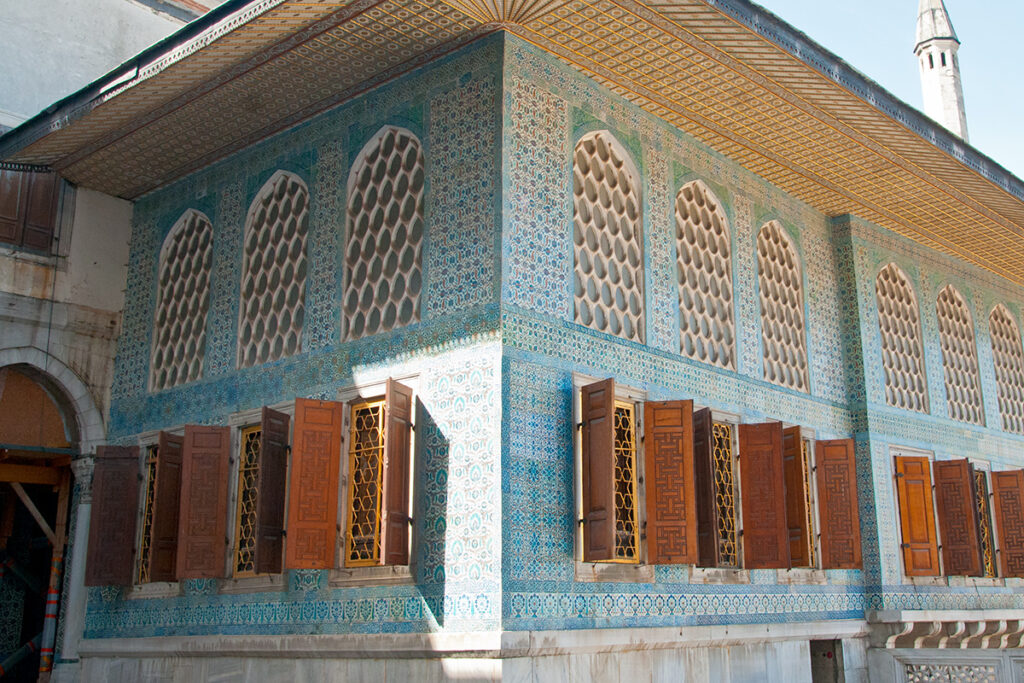
Although not all princes handled their imprisonment well. According to legend, İbrahim the Mad (the one who drowned all his concubines in the Bosporus) succumbed to his madness here after being imprisoned by his brother Sultan Murat IV for 22 years.
The windows of the Princes’ apartments look out onto the Courtyard of the Favorites. The favourites in the Topkapi harem were the Sultans’ four official wives and ‘flavour of the month’ concubines.
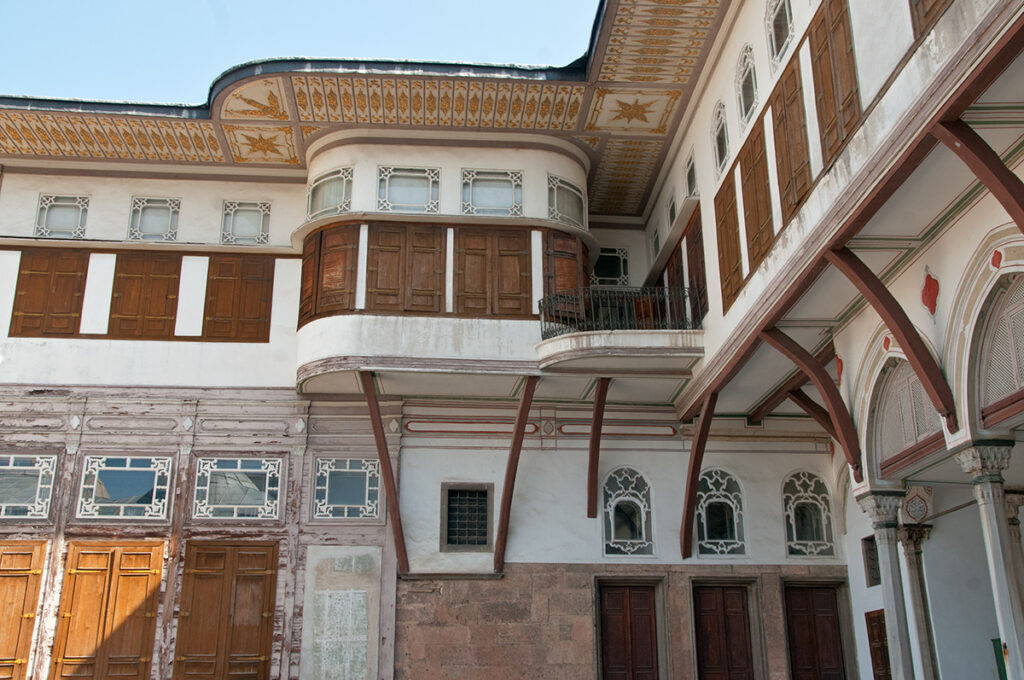
The exit from the Harem takes you to the Third Courtyard, so you can explore the palace in backward order, starting with the Fourth Courtyard and making your way through to the First and out through the Imperial Gate.
The Fourth Courtyard
The Fourth Courtyard is the secluded, innermost domain of the sultans and their families. It consists of several ornate pavilions, gardens, and terraces, many of which are as opulent as the rooms of the Topkapi Harem.
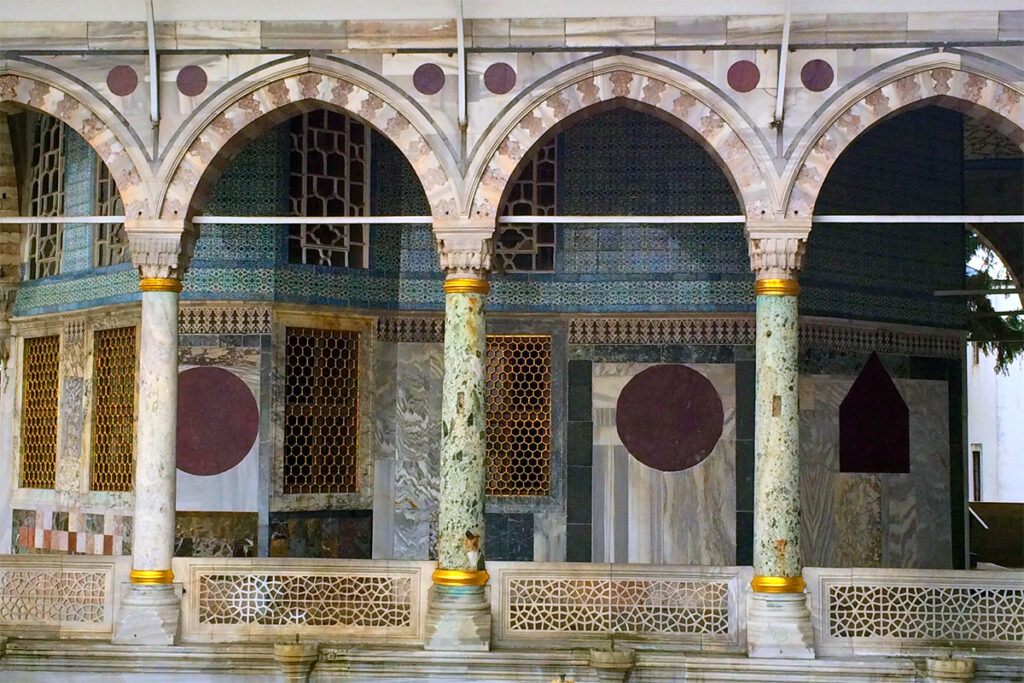
This courtyard marks the northernmost point of the Palace and enjoys sweeping views of the Golden Horn and the Bosphorus, especially from the delicate Iftar Pavilion.
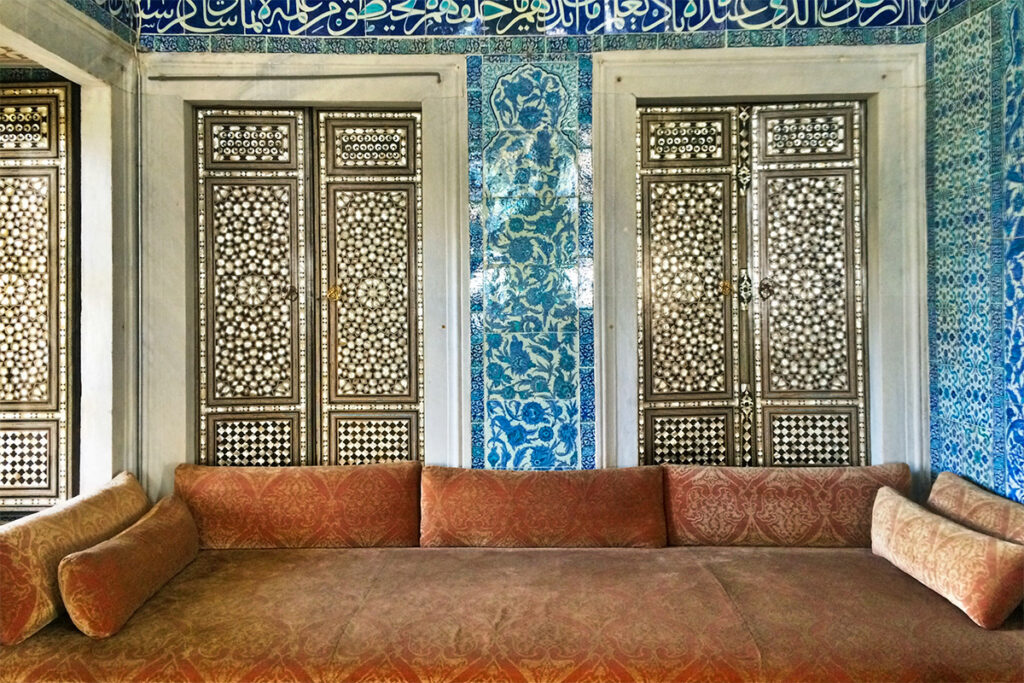
Two of the larger pavilions here: Revan Kiosk and Baghdad Pavilion, were built to commemorate the Ottoman conquests of Erevan and Baghdad, respectively. The Circumcision Room, as the name suggests, was used for the ritual where Muslim boys become men.
The Third Courtyard
Joining the Fourth and the Third Courtyards is the Pavilion of the Holy Mantle. It is a part of the Privy Chambers of the Sultans, where the holy relics of Islam are kept in heavily guarded rooms.
Pavilion of the Holy Mantle
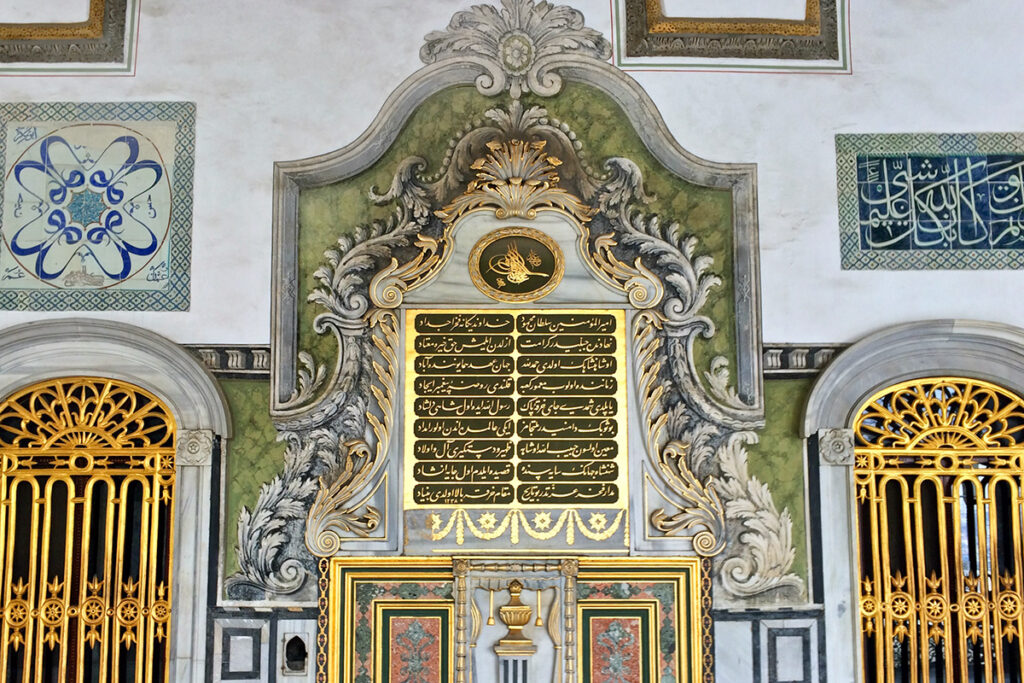
According to the information provided in the pavilion, the ancient relics were brought to Istanbul when the Ottomans conquered Egypt in the 16th century and the caliphate passed from the Abbasids to the Ottomans.
The relics range from the early Islamic period to the Old Testament. And while the authenticity of some items seems quite believable (Muhammad’s sword and bows; a cup from which he supposedly drank), others, such as the staff of Moses or Abraham’s cooking pot) are harder to accept.
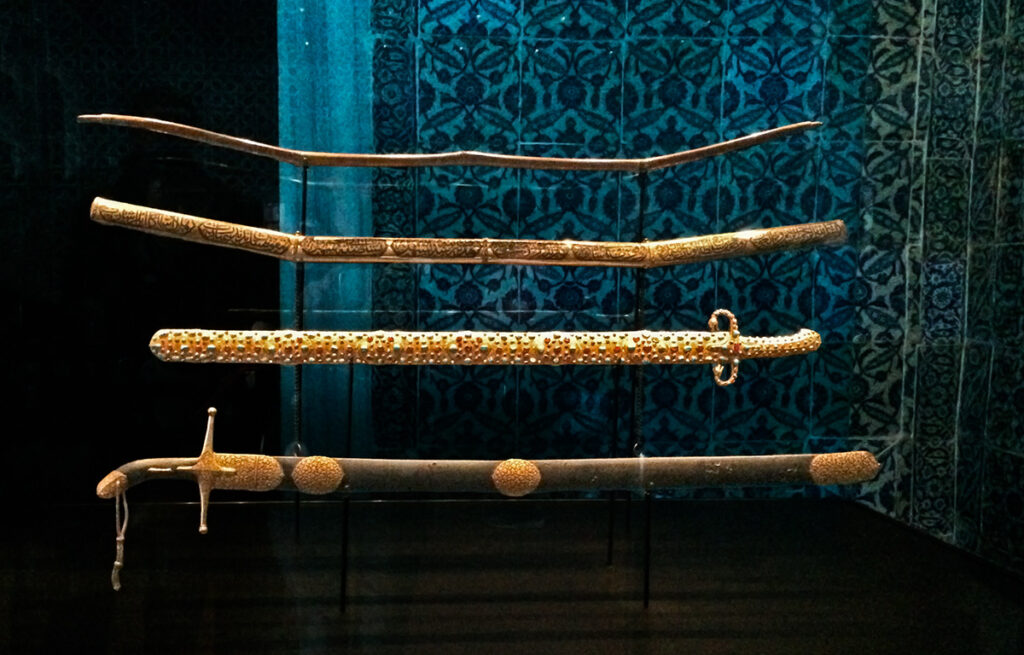
The Second Courtyard
Accessed through the imposing Gate of Felicity, the Second Courtyard is the administrative centre of Topkapi Palace. It is dominated by the Divan Chamber – the seat of the Imperial Council. This is where all the affairs of the empire were managed and citizens could enter the Second Courtyard to bring their petitions to the Council.
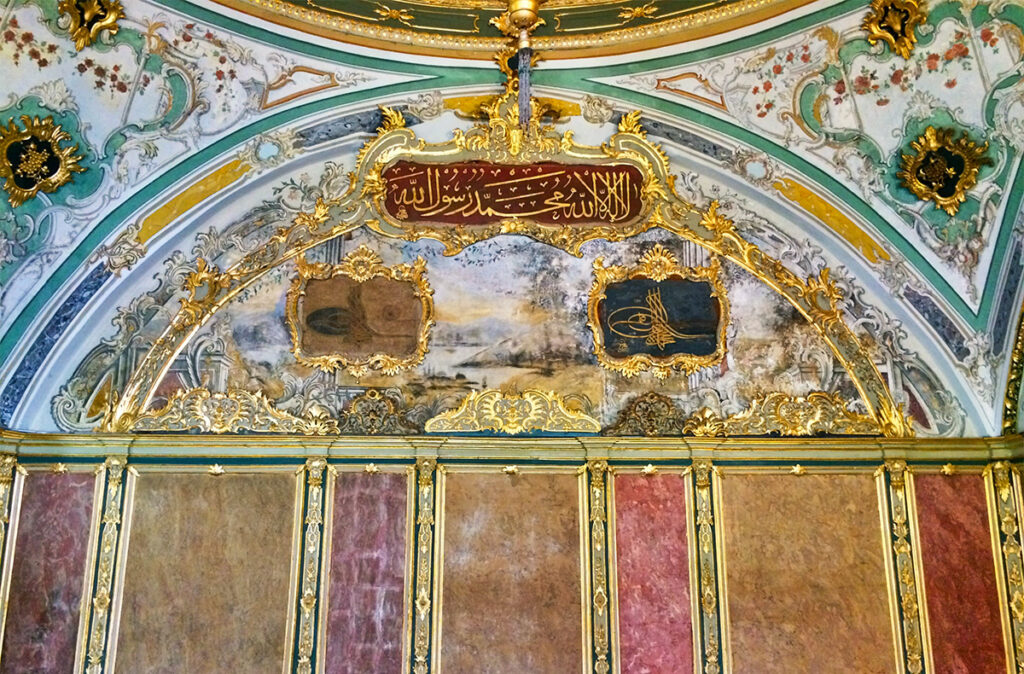
The other buildings in the Second Courtyard belong to the Imperial Stables and the Palace Kitchens. Built by the famous architect Mimar Sinan under the patronage of Sultan Suleiman, some of the kitchen buildings date back to the 15th century. The roof of the kitchen complex is made up of domes and spires, like in the Suleymanie mosque.
Today, the kitchens house the world’s second-best collection of Chinese porcelain brought to Constantinople from the east by camel caravans over the Silk Route.
The First Courtyard
The First Courtyard is the most spacious and public of the palace’s courtyards. During Ottoman rule, it was the only place open to the public. And it is the only place in the palace with a surviving Byzantine structure – Haghia Eirine – the 6th-century Christian church. Interestingly, Haghia Eirine was never converted to a mosque by the Ottomans.
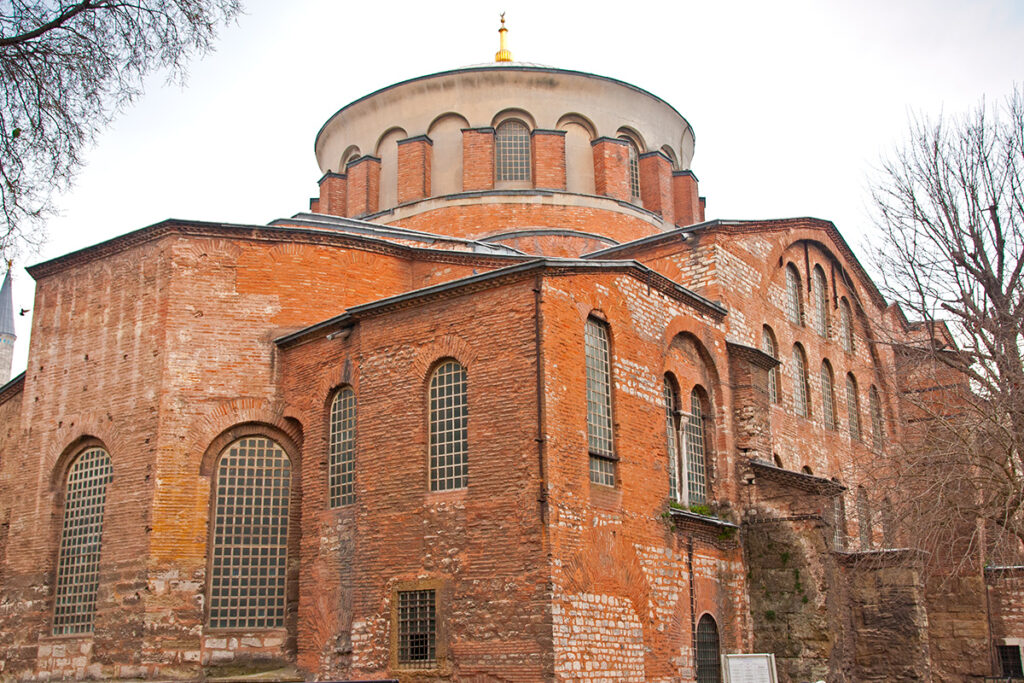
As the largest courtyard of Topkapi Palace, the First Courtyard has a large garden that looks absolutely gorgeous in spring when the flowers bloom in a colourful palette.
Istanbul Archaeology Museums
Also in the First Courtyard is the Istanbul Archaeology Museums. It is a complex of three museums: the Archaeological Museum, the Museum of the Ancient Orient and the Museum of Islamic Art.
All three museums deserve a thorough visit, but my favourite of the three is the Archaeological Museum, which has an incredible collection of glazed friezes from the Ishtar Gate of Babylon.
If you have invested in the Istanbul Museum Pass, you don’t have to purchase a separate ticket for the Archaeological Museum.
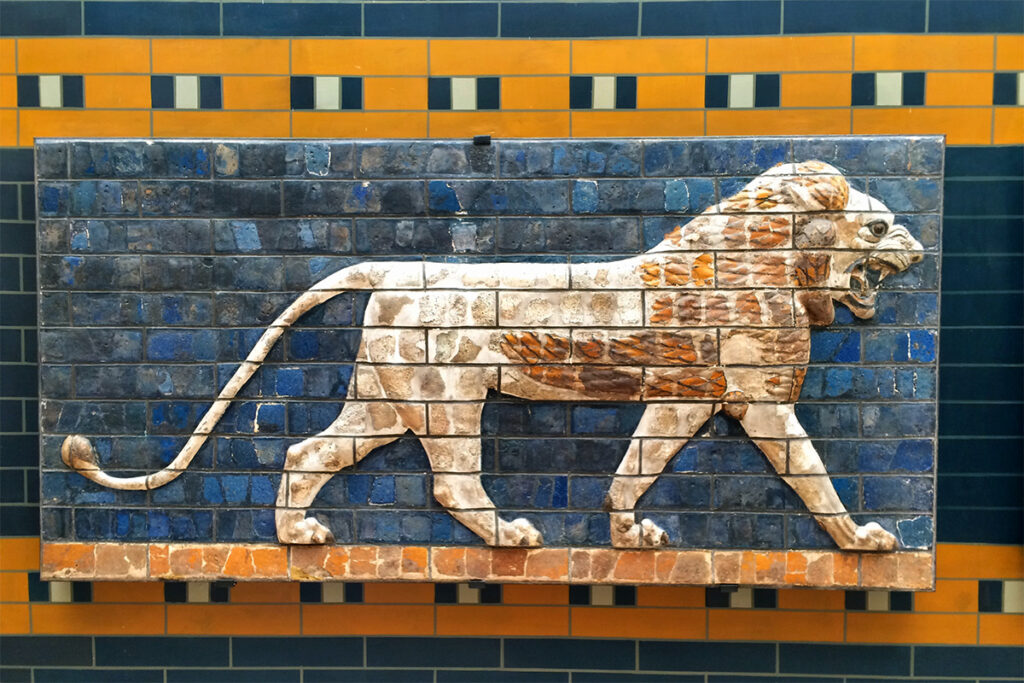
Apart from Babylon, the museum houses relics from a number of other interesting sites, including Troy and the mysterious Baalbek in Lebanon. You can also see one of the snake heads from the Serpentine Column – one of the four remaining columns of the Hippodrome of Constantinople.
Other interesting items include the Alexander Sarcophagus, a tablet with the oldest known inscription of laws – the laws of King Ur-Nammu, a collection of artifacts from the early civilizations of Mesopotamia and Egypt, and a large Troy exhibit.
Archaeological Museum Cafe
And after a long day of walking and exploring, the cafe in the courtyard of the Archaeological Museum, The Museum Cafe, is a perfect place for lunch among the ancient artifacts and the ever-present Istanbul cats that seems to own the place. It is one of the coziest cafes in Istanbul, and one of the city’s hidden gems.
The courtyard of the cafe is filled with ancient columns and statues – probably the overflow from the museum collection.
The cafe has tables inside and outside. The prices at the cafe are quite high, and if you don’t feel like a splurge, it might be an idea to bring your own snack and just order a coffee.
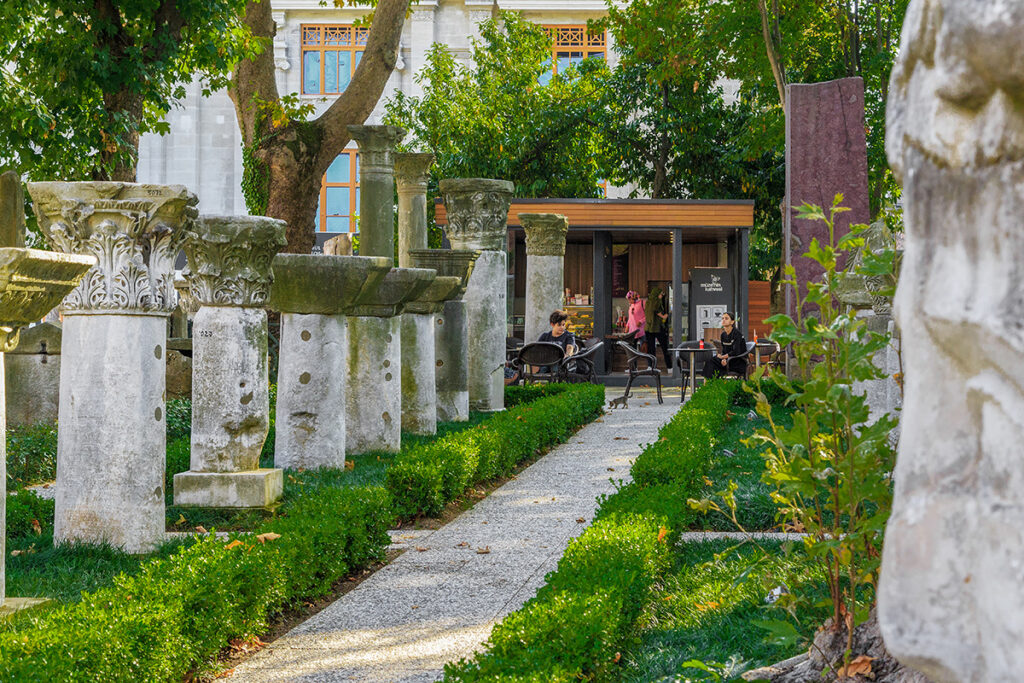
Final Thoughts on Topkapi Palace and the Harem
This introduction to the Topkapi Palace only scratches the surface. The complex is so immense and so stunning that it almost defies belief. I would definitely recommend spending a full day exploring the courtyards of the palace and the Archaeology Museum.
The Harem is the absolute must – it is one of the most beautiful areas of the palace. The Pavillion of the Holy Mantle is a crowded place, but it is curious for the artifacts it contains. And if you are a fan of ancient history and enigmatic places like Troy and Babilon, don’t miss the Archaeology Museum.
More on Exploring Istanbul
- 11 Best Cafes in Istanbul to Experience the Centuries-Old Cafe Culture
- Guide to Vising Topkapi Palace & Harem: Sultans and Concubines
- How Many Days in Istanbul is Enough? Guide to Exploring the City
- 16 Charming Istanbul Hidden Gems and Underrated Sites
- 3 Umbrella Streets in Istanbul – Colorful Urban Sanctuaries
- Where to find Constantinople Today: On the Trail of Constantinople in Istanbul
- Finding Birds in Istanbul without Looking for Them

